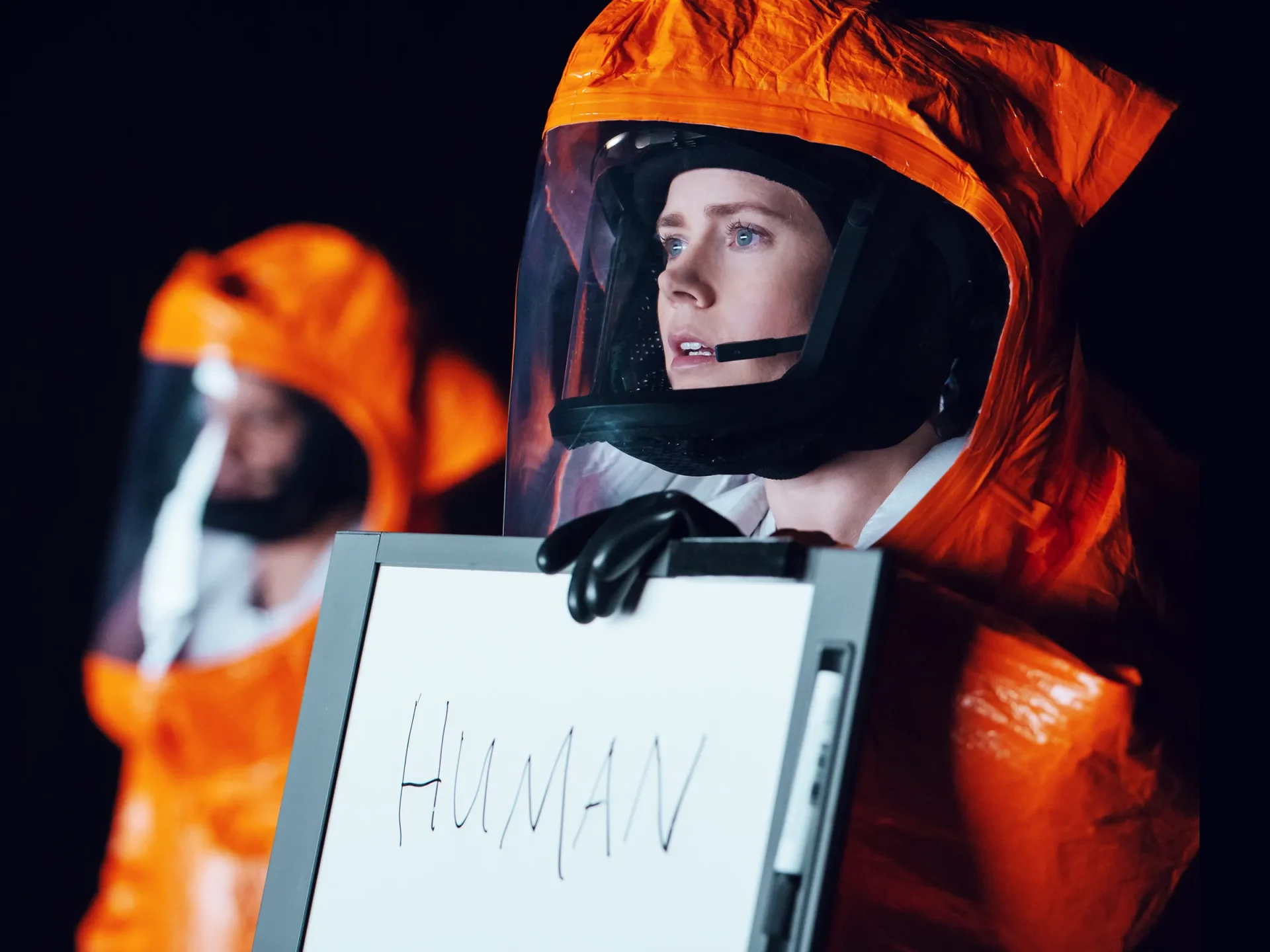“Are we not in this sense parts of a greater organism, kept alive through the ever more vividly circulating blood of an enormous past?” Biochemist Erwin Chargaff uses this analogy of circulating blood to describe the life-affirming virtue of memory. His proposition asserts that memory is not simply an element of a distant future. It pumps life into the present. Whether the choice of the analogy is deliberate is unknown; however, what stands out peculiarly is the invisible harmony between the shape and scope of biological and philosophical constructs. The Circle of Willis mirrors the circle of time, the doorway to memory. Denis Villeneuve’s “Arrival” (2016) emulates this topology and features it as its central enigma.
Arrival (2016) Movie Synopsis and Plot Summary:
Linguistic scholar Louise Banks is contacted by the US Army when an extraterrestrial spaceship is seen hovering too close to the surface of the Earth in Montana. Eleven more are scattered all over the world. In addition to Banks, Physicist Ian Donnelly has been roped in by Colonel Weber to study the spacecraft. Banks and Donnelly ascend into the vehicle, accompanied by their teammates, and make the first contact with the creatures inside.
The Heptapods, as the aliens are called, have arthropod-like limbs that end in a starfish-like hand. Banks manages to establish contact with two of them, whom they name Abbott and Costello. While Banks tries to make the aliens learn human language in a bid to decode their purpose, Abbott and Costello squirt out ink circles to communicate. In the process of decoding the complex language of the Heptapods, Banks begins experiencing flashes of visions of a little girl.
Finally, Louise establishes a somewhat sturdy understanding of the Heptapod language and reiterates her question regarding their purpose. The next time she meets the aliens, she translates one message as ‘offer weapon.’ While the others at the base read the message as a threat, Banks constantly stresses the possibility of a misrecognition, the fact that the aliens might have used ‘weapon’ without fully understanding its far-reaching meaning. The ‘use weapon’ message causes widespread tension among the other countries in the alliance that has been formed to tackle this mystery.
Arrival (2016) Movie Ending Explained:
How does Louise start perceiving time in a non-linear manner?

Most of the explanation as to what the Heptapods’ purpose on Earth could possibly reside in their use of language. Interestingly, in the film, there is no seeming consonance between what they sonically produce and what they create with their starfish-like hands. The dread that the audience feels comes not so much from the danger of these unknown creatures and the threats they pose than from being witness to the almost impossible task of learning an alien language. The Heptapod language is semasiographic, using symbols to communicate meaning that is not directly linked to its translation in phonetic speech.
The film does not provide much detail on how Banks seems to have gotten a grasp of what message each swirl conveys. There is no grammar to learn, so to speak. Perhaps the absence of any portrayal of the language-learning experience for Banks and the others corresponds to the logograms of the Heptapod being free of any time– it just skips to the good part!
The film’s passing reference to the Sapir-Whorf Hypothesis, or Linguistic Relativity, becomes pertinent. According to the theory, the language one speaks is inexorably bound to how one views the world. It is beyond the scope of this article to get into the critiques of the hypothesis. However, it would be sufficient to note that it puts forth the idea that the Heptapods’ experience with time, starkly different from the experience of the humans, leads to the logograms’ unique nature. Donnelly asks Banks if her mysterious dreams have anything to do with her being immersed in the Heptapod language. He asks her if she is dreaming in their language.
The film introduces the information of Banks losing her daughter, Hannah, right at the start. By the time she engages herself with the alien language decoding operation, it is a fact well-established amongst the audience. As we see Banks going about with her job but constantly being interrupted by the mental images of her daughter, we are prompted to believe it as just the trauma resurfacing. It is not until Banks’ extremely close encounter with the Heptapods that we come to understand that Banks does not recognize the child in reality.
The visions of the child are just prophecies rather than past memories. The narrative plays a trick on us, and we are made to believe that Louise Banks’ experience of time is linear and conforms to our expectations. In fact, it is our bewildering experience with the final revealing that resembles the Heptapods’ non-linear flat circle of time.
Arrival (2016) Themes Analyzed:
“Time is a flat circle”
In True Detective, the central enigma is time being envisioned as a ‘flat circle,’ a concept popularly promulgated by Rust Cohle. It is a concept that is underpinned by the ‘eternal recurrence’ theory of Nietzsche. The act of fixating on time circularity for what it is lends it a sense of debilitating dreadfulness, where all actions seem pointless and futile.
Everything has already been programmed, which leaves little scope for the working of free will. However, if we are to really look hard, the only way to rise above the predecided programming is to be aware of its existence. As the aliens bestow Louise with the power to live every moment, Louise knows that she is going to have a child with her husband. She knows that the child will not have a long life and the death will cause her marriage to splinter, yet she makes those choices. Interestingly, despite fully knowing how it all ends, the ending does not show Louise as a hapless, miserable figure. The film ends with Banks’ words on how to treat the inevitability of the future: “to embrace it and welcome every moment of it.”
Banks develops what Nietzsche calls amor fati. She knows she cannot escape her fate, and, therefore, she comes to embrace her fate lovingly and make it more fulfilling. There is a blink-and-miss detail in the film– it is when Hannah asks Louise to recall a specific word for the sense when both parties benefit from a deal, the term that she is searching for is particularly technical and scientific in nature. Louise tries hard but gives up after a point and asks her daughter to call her father.
The frustration in the atmosphere is palpable: while Louise’s frustration stems from an inability to cater to her daughter’s needs, Hannah’s stems from being deprived of her mother’s attention. Louise turns the situation on its head by traveling back and forth in time to pass on the knowledge to her daughter. Her recognition of the limited time she would get with her daughter perhaps allows her to be a better mother
Therefore, eternal recurrence for Banks is devoid of any scope of despair and suffering. Banks walks into her choices– of both marriage and the birth of her daughter– knowing fully well the suffering that follows, but instead prioritizing the view that these are her irreplaceable portals to experience love.







